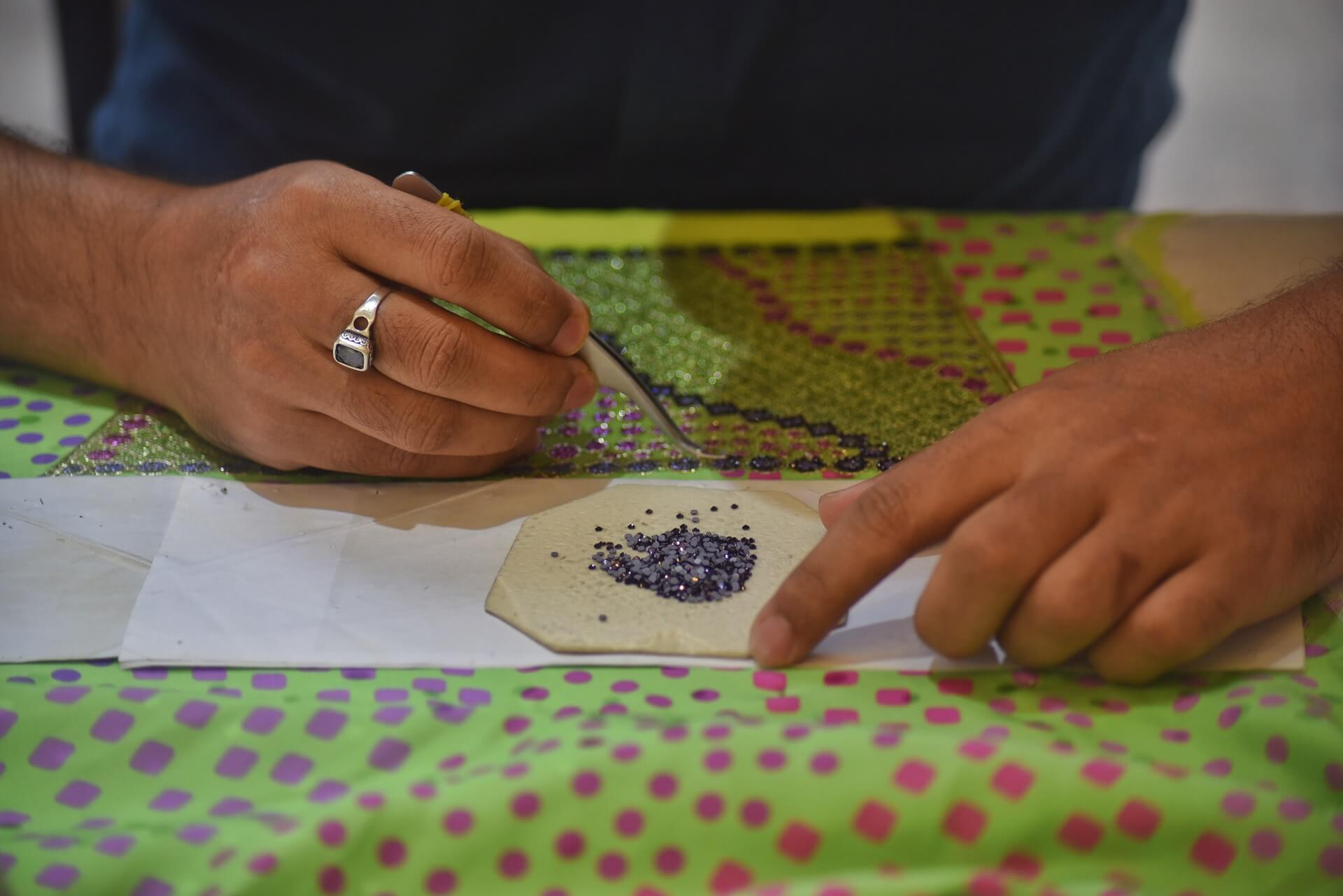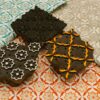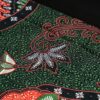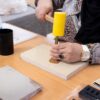Why Cotton Fabric is Pre-treated Before Block Printing?

When clothing has a good appearance that includes colour, texture, sheen, and feel, it looks attractive. Hand-block printing craftsmen strive to create smooth and comfy garments that entice people to buy. However, in order to produce these effects, the cloth must go through multiple cotton pre-treatment steps before being printed.
Cotton pre-treatment techniques aid in the removal of both added and natural impurities from the fabric, such as the natural colour of the cotton fabric, sizing materials, oils, waxes, starch, and other impurities that affect the absorbency, look, and fullness of shade development.
When cotton yarns are woven into fabrics, they are first size treated so that they develop the strength to withstand the tension during weaving. The size treatment paste contains starch, oils, and lubricants that reduce the absorbency of the fabric.
Following the treatment, the cotton fabric develops many weaving faults such as spots and oil marks. These blemishes must be eliminated before the cotton fabric can be printed again.
Purpose of Cotton Fabric Pre-treatment
The cotton fabric is pre-treated for the following reasons:
- Pre-treatment removes all the impurities and immature fibres present in the cotton fabric
- It improves the uniform dye uptake capacity of the fibre.
- It improves the moisture absorbency and hydrophobicity of the cotton fibre.
- Pre-treatment is done to achieve the desired degree of whiteness of exact shade development.
- It improves the softness, lustre, feel, and texture of the fibre.
Cotton Fabric Pre-treatment Process
There are various dry-processing and wet-processing steps in the cotton fabric pre-treatment process. Let’s take a look at each of these stages separately.
1. Greige cloth inspection
The greige or grey cloth obtained from the weaving department is scrutinized for noticeable faults, loose threads, stains, and oil marks. The fabrics are printed by hand and stitched together to create a continuous length of fabric.
2. Cropping the fabrics
Cropping is used to eliminate any long projecting threads from the fabric’s surface. A metal detector is used in this operation to detect any metal particles in the cloth that are manually removed.
3. Singeing the fabric
Singeing is a mechanical procedure that eliminates short and projecting fibres from fabric yarn interstices. These are very short and thin fibres that are not eliminated during shearing and can interfere with the printing process.
These fibres give the fabric a foggy look known as frosting. Singeing increases the cotton fabric’s aesthetic qualities such as smoothness, evenness, clean appearance, and shine. It allows for more clear and sharp printing effects on textiles.
4. Scouring the cotton fabric
The scouring process, also known as the boiling or boiling-out process, is used to remove natural and added impurities from cotton fabric, such as oils, waxes, and so on. This method increases the absorbency of the cotton fabric without harming it.
Many chemicals, including soda (NaOH), sodium silicate (Na2SiO3), and soda ash, are employed in this procedure (Na2CO3). Following the scouring procedure, the cloth is thoroughly rinsed to remove any traces of alkali.
5. Desizing the fabric
Desizing aids in the removal of starch material from yarn or fabric by the hydrolysis of starch. The fabric’s sized material is made up of starch, binder, softener, lubricants, and other ingredients.
Starch is an insoluble substance that, during the hydrolysis process, is transformed into insoluble dextrin and then into soluble dextrin. It is subsequently broken down further to maltose before being transformed into soluble alpha glucose molecules. This material can be removed from the fabric by washing it in clean water.
Desizing is accomplished using a hydrolytic procedure that employs water, acid, enzyme, and chemicals, followed by fabric washing and rinsing.
6. Bleaching the cotton fabric
Bleaching removes the natural colouring matter in the fabric or yarn, resulting in a high degree of whiteness and a uniform appearance. Furthermore, bleached fabrics can be dyed to provide vivid colours and improved fabric brilliance. Bleaching can be accomplished with various bleaching agents, followed by hot water washing and rinsing.
7. Souring the fabric
Souring is done after the bleaching process is finished to neutralize the alkali present in the cloth as a result of the bleaching. At room temperature, dilute mineral acids are used in this process. Following the souring process, the cloth is thoroughly rinsed with water to remove any acid residues. Any residue left on the cloth can compromise its strength and texture, thus it must be properly washed before using it for hand block printing.
Conclusion
Cotton fabric dye and print quality can be improved with proper chemical and mechanical pre-treatment. Furthermore, the fabric structure and hydrophobicity of the fabric surfaces have no effect on the print quality of the pre-treated cotton fabric. The colour absorption capacity and colour retention characteristic of the cotton fabric are also improved by pre-treatment.
You can browse our selection of hand-block printed materials from the convenience of your own home. Explore our one-of-a-kind assortment of hand-block print materials right now.
Recent Posts

Why your bedroom needs hand block printed prints?
Why Your Bedroom Needs Hand Block Printed Prints?After a long day, your …
Why Hand Block Printed Bed Sheets are Trending?
Why Hand Block Printed Bed Sheets Are Trending? Your bed sheets are …
How to Incorporate Hand Block Printed Bedsheets into Your Home Decor?
How To Incorporate Hand Block Printed Bedsheets Into Your Home Decor? Hand …
What Makes Hand Block Print Fabrics Unique?
What Makes Hand Block Print Fabrics Unique? Hand block print fabrics are …
What Is Block Printing? Types Of Block Printing
What Is Block Printing? Types Of Block Printing Printmaking is a common …
